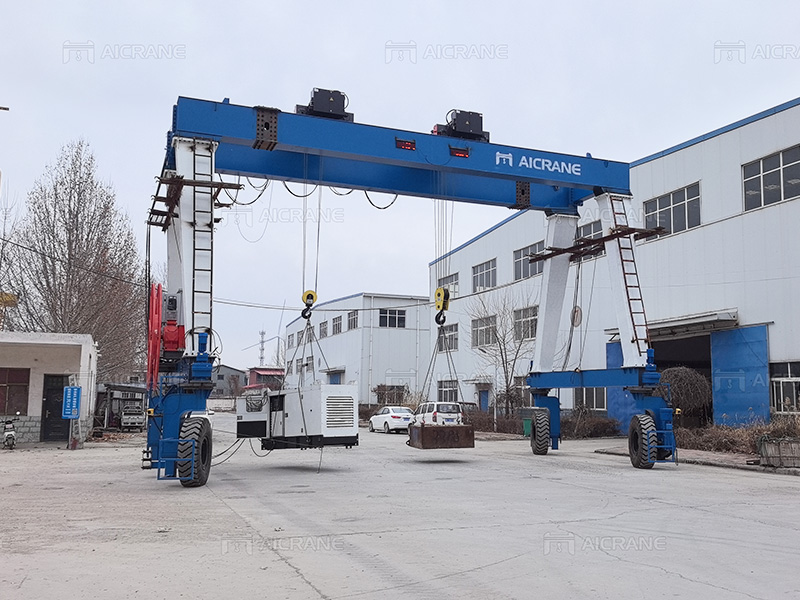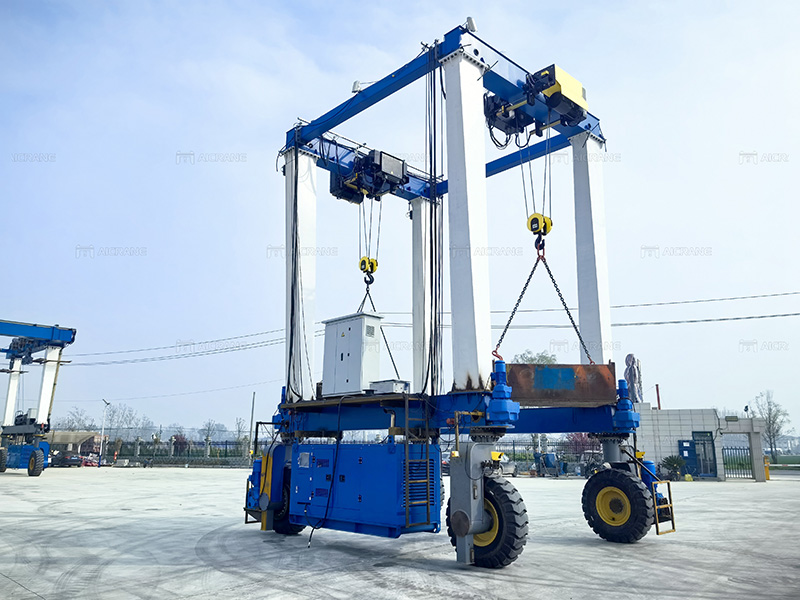Rubber Tyre Gantry (RTG) cranes are essential in port and intermodal terminal operations, playing a critical role in stacking and organizing containers efficiently. Ensuring the proper installation and rigorous load testing of RTG cranes is vital for operational efficiency, safety, and longevity of the equipment. This article delves into the step-by-step process of installing RTG cranes, the procedures involved in load testing, and an analysis of the associated costs.

Installation of Rubber Tyre Gantry Cranes
1. Site Preparation
Survey and Ground Preparation:
- Survey: Conduct a thorough site survey to identify suitable installation locations, considering factors like ground stability, accessibility, and proximity to operational areas.
- Ground Preparation: Ensure the ground is level and compact. Any uneven or weak sections should be reinforced to support the crane’s weight and operations.
Power Supply and Connectivity:
- Establish a robust power supply network to the installation site. Rubber tyre gantry can be powered by diesel generators or an electric grid, so plan accordingly.
- Install necessary communication and control system conduits to ensure seamless operational integration.
2. Delivery and Assembly
Transport Logistics:
- Coordinate with suppliers for the timely delivery of crane components. Given the size and weight of these parts, specialized transport equipment and handling procedures are required.
Assembly Process:
- Foundation Work: Begin with laying the foundation, ensuring it adheres to the manufacturer’s specifications for load-bearing capacity.
- Crane Assembly: Assemble the main frame, wheels, and gantry structure. This process typically involves the use of heavy-duty cranes and skilled labor to ensure precise alignment and secure fittings.
- Installation of Machinery: Install the hoisting mechanisms, including winches, cables, and pulleys. Follow this with the installation of the electrical and hydraulic systems necessary for crane operation.
Quality Control and Inspection:
- Conduct thorough inspections at each assembly stage to ensure all components are correctly installed and meet the required standards. Engage certified inspectors for final validation.
3. Calibration and Configuration
System Calibration:
- Calibrate the control systems to ensure accurate and responsive operation. This involves setting up the programmable logic controllers (PLCs), sensors, and communication interfaces.
Operator Training:
- Train the crane operators on the specific controls and safety protocols of the newly installed RTG crane. This training should include both theoretical and practical components.

Load Testing of Rubber Tyre Gantry Cranes
Load testing is a critical phase in ensuring the operational safety and efficiency of RTG cranes. The testing process can be categorized into static and dynamic load tests.
1. Static Load Testing
Purpose:
- To verify the structural integrity and load-bearing capacity of the gantry crane system when subjected to maximum rated loads.
Procedure:
- Preparation: Prepare test weights equivalent to the crane’s rated capacity. Ensure all safety measures are in place, including the presence of emergency personnel and equipment.
- Load Application: Gradually apply the test weights to the crane. Monitor the structure for any signs of deformation or instability.
- Inspection and Documentation: Inspect all critical components for stress, strain, and any potential failures. Document the findings comprehensively.
2. Dynamic Load Testing
Purpose:
- To assess the crane’s performance under operational conditions, including lifting, lowering, and traversing with loads.
Procedure:
- Preparation: Similar to static load testing, but include additional dynamic load handling setups.
- Dynamic Testing: Operate the crane with varying loads, speeds, and directions. Simulate typical operational scenarios to assess the crane’s performance.
- Monitoring and Analysis: Use diagnostic tools to monitor real-time data on load distribution, speed, and mechanical stress. Analyze this data to identify any performance issues or areas for improvement.
Cost Analysis
1. Installation Costs
Site Preparation and Foundation:
- Costs can range from $50,000 to $200,000 depending on site conditions and the extent of groundwork required.
Crane Components and Transport:
- The cost of the crane itself can vary significantly, typically ranging from $1 million to $2 million. Transport and assembly can add another $100,000 to $300,000.
Labor and Supervision:
- Skilled labor, including operators, engineers, and inspectors, can cost between $100,000 and $250,000 for the installation phase.
2. Load Testing Costs
Equipment and Setup:
- Renting or purchasing test weights and diagnostic equipment can cost around $20,000 to $50,000.
Testing Personnel:
- The cost of certified testing personnel and safety supervisors can range from $10,000 to $30,000.
Total Costs:
- Combining installation and load testing costs, the total expenditure can be between $1.3 million and $2.8 million, depending on various factors like site conditions, crane specifications, and regional labor costs.
Conclusion
The installation and load testing of Rubber Tyre Gantry cranes are complex processes that require meticulous planning, skilled labor, and significant financial investment. Proper installation ensures the crane’s efficiency and longevity, while thorough load testing guarantees safety and operational reliability. By adhering to industry standards and best practices, port and terminal operators can optimize their operations and maintain high safety standards. To learn more, visit https://steelmillcranes.com/